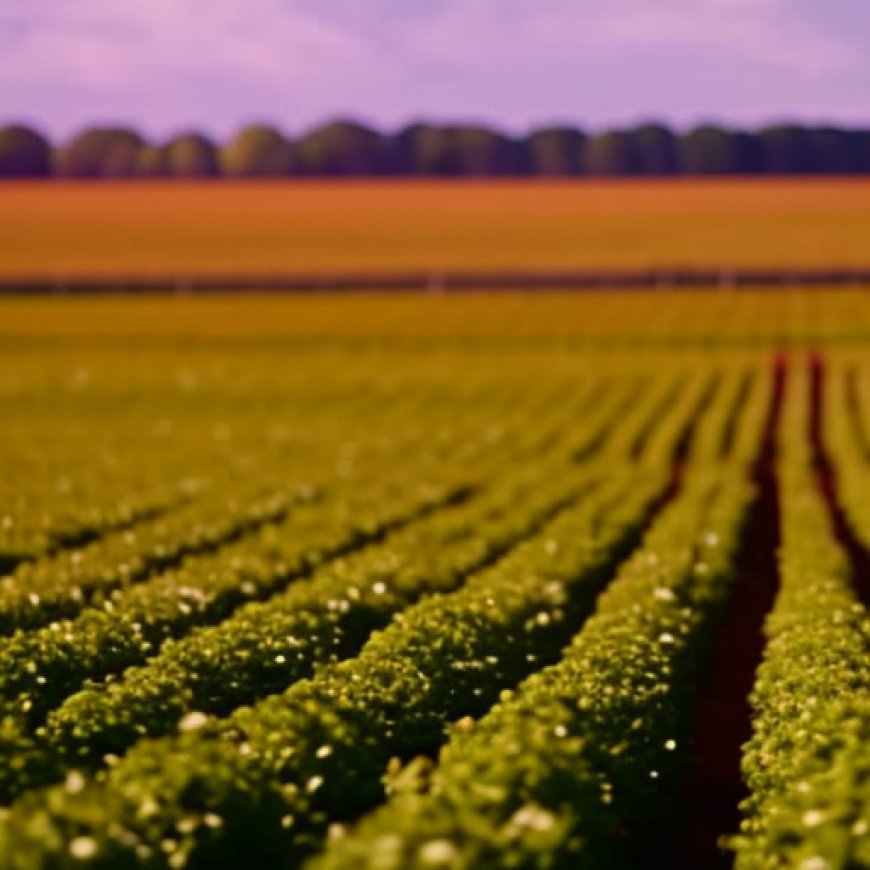Farmers Need Incentives To Overcome Risks Of Adopting Climate-Smart Agriculture Practices
Farmers Need Incentives To Overcome Risks Of Adopting Climate ... AgFax


Change is not easy for farmers and ranchers

Farmers and ranchers often face financial risks when considering innovative, climate-smart agricultural practices. While these practices, such as cover crops, no-till, and prescribed grazing, have long-term benefits in terms of soil health, the uncertainties and expenses involved in implementing them can make farmers hesitant to make changes in their operations.
Therefore, it is crucial for farmers and ranchers to have access to conservation programs that provide them with funds to adopt climate-smart improvements on their land. These programs enable producers to take risks, experiment with new practices, and work towards long-term land improvement and climate resiliency goals, all without compromising their immediate needs and those of their families.
Funding for climate-smart agriculture
Under the Inflation Reduction Act (IRA) signed into law in August 2022, conservation programs have received an additional $19.5 billion over five years to support climate-smart agriculture. The following programs will benefit from this funding:
- Environmental Quality Incentives Program (EQIP): $8.45 billion
- Regional Conservation Partnership Program (RCPP): $4.95 billion
- Conservation Stewardship Program (CSP): $3.25 billion
- Agricultural Conservation Easement Program (ACEP): $1.4 billion
- Conservation Technical Assistance: $1 billion
In addition, the IRA has allocated $300 million for quantifying carbon sequestration and greenhouse gases through the collection and utilization of field-based data to assess conservation outcomes, as stated in a USDA press release from February 2023.
Incentivizing farmers to adopt climate-smart practices
Fred Yoder, co-chair of Solutions from the Land, believes that this funding presents a unique opportunity to incentivize farmers to try new practices without exposing them to significant financial risks. Encouraging farmers to adopt climate-smart practices is a sensible approach, and it is essential to provide them with a range of tools and resources as they continually adapt and improve their operations.
Meeting the demand for conservation programs
The EQIP, CSP, ACEP, and RCPP programs are already oversubscribed, indicating that more producers are interested in participating than there is available funding. Farmers recognize the benefits of making changes that enhance their own well-being, improve their land, and contribute to society’s resilience in the face of droughts and other weather pattern shifts. To ensure that agriculture can continue to provide nutritious food, clean water, clean air, and other ecosystem services, it is crucial to secure the necessary funds and tools for agricultural producers. Therefore, it is vital to maintain these resources and ensure they remain available for their intended purposes.
SDGs, Targets, and Indicators in the Article
1. Which SDGs are addressed or connected to the issues highlighted in the article?
- SDG 2: Zero Hunger – The article discusses the need for farmers to have access to funds and programs that support climate-smart agricultural practices, which can contribute to sustainable food production.
- SDG 13: Climate Action – The article emphasizes the importance of climate-smart agricultural practices in building soil health and improving climate resiliency.
- SDG 15: Life on Land – The article mentions the need for funds and tools to support agricultural producers in improving their operations and ensuring the provision of ecosystem services.
2. What specific targets under those SDGs can be identified based on the article’s content?
- SDG 2.4: By 2030, ensure sustainable food production systems and implement resilient agricultural practices that increase productivity and production, that help maintain ecosystems, that strengthen capacity for adaptation to climate change, extreme weather, drought, flooding, and other disasters, and that progressively improve land and soil quality.
- SDG 13.2: Integrate climate change measures into national policies, strategies, and planning.
- SDG 15.3: By 2030, combat desertification, restore degraded land and soil, including land affected by desertification, drought, and floods, and strive to achieve a land degradation-neutral world.
3. Are there any indicators mentioned or implied in the article that can be used to measure progress towards the identified targets?
Yes, the article mentions the following indicators:
- Funding allocation to conservation programs: The article states that the Inflation Reduction Act (IRA) signed into law in August 2022 provided an additional $19.5 billion over five years for climate-smart agriculture programs. This funding allocation can be used as an indicator of progress towards the targets.
- Oversubscription of programs: The article mentions that the EQIP, CSP, ACEP, and RCPP programs are already oversubscribed, indicating the demand and interest among farmers to participate in these programs. This can be used as an indicator of the adoption and implementation of sustainable agricultural practices.
Table: SDGs, Targets, and Indicators
| SDGs | Targets | Indicators |
|---|---|---|
| SDG 2: Zero Hunger | 2.4: By 2030, ensure sustainable food production systems and implement resilient agricultural practices that increase productivity and production, that help maintain ecosystems, that strengthen capacity for adaptation to climate change, extreme weather, drought, flooding, and other disasters, and that progressively improve land and soil quality. | – Funding allocation to conservation programs – Oversubscription of programs |
| SDG 13: Climate Action | 13.2: Integrate climate change measures into national policies, strategies, and planning. | – Funding allocation to conservation programs – Oversubscription of programs |
| SDG 15: Life on Land | 15.3: By 2030, combat desertification, restore degraded land and soil, including land affected by desertification, drought, and floods, and strive to achieve a land degradation-neutral world. | – Funding allocation to conservation programs – Oversubscription of programs |
Behold! This splendid article springs forth from the wellspring of knowledge, shaped by a wondrous proprietary AI technology that delved into a vast ocean of data, illuminating the path towards the Sustainable Development Goals. Remember that all rights are reserved by SDG Investors LLC, empowering us to champion progress together.
Source: agfax.com

Join us, as fellow seekers of change, on a transformative journey at https://sdgtalks.ai/welcome, where you can become a member and actively contribute to shaping a brighter future.







